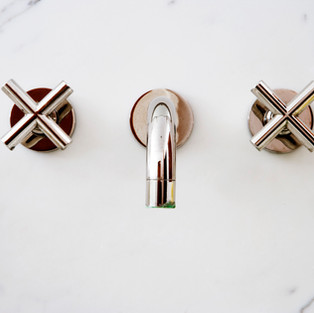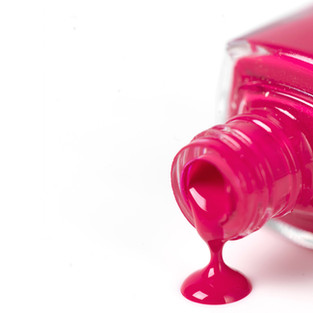What is Your Toxic Load?
- Vicky Sham

- Feb 28, 2020
- 4 min read
Updated: Mar 2, 2020
If there is a small silver lining from the covid-19, it is that many of us are becoming experts in washing our hands, cleaning and sanitizing everything we come into contact. Of course it is always a good habit to keep ourselves clean, eat a variety of fresh whole food, exercise in open air and have a mindful practice to maintain a strong immune system.
Diabetes, Obesity, Gut Dysbiosis
Meanwhile, what more can we do to protect ourselves and our family? Have you ever considered what kind of unwanted chemicals may be lurking in our food, our water supply, the air we breathe, and the environment surrounding our everyday lives? What about skin care and household cleaning products? Do you know how the ingredients may impact your health and gut microbiome? Do you know that many personal care products contain substances that can be linked to diabetes, obesity, gut dysbiosis and immune system?
Yes, you can blame your shampoo or hand cream for those stubborn few pounds you are struggling to lose. But only if you start reading and knowing what ingredients are in your personal care products.

Skin Allergies
Have you ever suffered from skin allergies and issues such as rashes, acne and eczema? These may be related to specific foods in your diets - processed foods, artificial flavourings, colouring, wheat, dairy, soy and eggs. In which case you may try eliminating these foods and observe if the symptoms subside. If the issues are not caused to food, they may be related to the ingredients in your personal care and household products.
Common Ingredients to Avoid
Let's take a look at some common ingredients in our personal care and cleaning products.
Parabens (propyl-, butyl-, isopropyl-, and isobutyl- parabens) are preservatives commonly found in shampoo, makeup, hair dyes, tanning sprays, sunscreen and deodorants. Parabens can act like xenohormones by mimicking oestrogen and may contribute to obesity. In Europe, the use of methylparaben and ethylparaben are considered safe with maximum concentrations, but note that even small amounts may disrupts the human endocrine system.
Phthalates are a group of chemicals used to improve the flexibility of plastics such as PVCs. Although the main source of phthalates exposure is food and drinks wrapped in plastic packaging, phthalates are also found in personal care products such as nail polish, perfumes, hair spray, shampoo, soaps and detergents. Like parabens, phthalates are endocrine disruptors and affect our hormonal functions, reproductive system, cardiovascular system, glucose metabolism and the development of obesity.
Bisphenol A (BPA)
Bisphenol A, aka BPA, is known to share similar endocrine disrupting characteristics as phthalates. BPA is commonly found in plastic bottles and a wide range of daily utensils. Look out for BPA-free bottles or containers, and ideally use other materials such as glass and ceramics.
Synthetic fragrances are typically derived from petroleum, such as toluene and benzene derivatives which may be carcinogenic in high doses. They are found in perform, fabric softeners, dryer sheets, soaps, shampoos, conditioners and air fresheners.

Triclosan has been used as antibacterial agents in hospital and antibacterial soaps. Although the FDA has banned its use in soaps in 2017 as a precaution against bacterial resistance, triclosan may still be found in personal care products such as toothpaste and deodorants.
Sodium lauryl sulphate (SLS) presents the final surprise. SLS are emulsifiers and foaming agents found in shampoos, liquid soaps, body cleanser and toothpaste. For years SLS has had a bad reputation as an irritant to the eyes and skin, but more recent studies suggest that with the proper formulation and concentration, SLS is safe for use as consumer household cleaning products. As long as you don't have dermatitis or other skin conditions, and you don't leave soap or body cleanser on your dry skin for days, SLS is generally safe to use.
More Resources on Skin Care Products
If you want to learn more about the safety of your skin care or household products, the Environmental Working Group (EWG) website is a great place to start. There is also an app called SkinDeep which rates the safety and toxicity of individual consumer products.
Read the Labels and Use Trusted Brands
I cannot emphasise enough that it is important keep learning and read the labels. Look for products that are free of parabens, phthalates, dyes, triclosan and fragrances. The good news is that there is a growing world of healthy, organic and natural alternatives to most daily care products. It is a matter of educating ourselves and avoiding the most harmful chemicals. If you haven't got the time to read up, it is always a good practice to stick to one or two trusted organic brands known to be free of artificial chemicals, dyes and fragrances to minimise your toxic load.
Further Information
1. A Review of the Endocrine Activity of Parabens and Implications for Potential Risks to Human Health
Robert Golden 1, Jay Gandy, Guenter Vollmer
2. Parabens and Their Relation to Obesity
3. Kraft-Heinz Rejects Effort To Get Phthalates Out of Mac and Cheese
4. Phthalates and diet: a review of the food monitoring and epidemiology data
Serrano S, Braun J, Trasande L, Dills R, Sathyanarayana S.
5. Association of phthalate exposure with precocious and delayed pubertal timing in girls and boys: a systematic review and meta-analysis
Golestanzade M, Raihi R, Kelishadi R
6. Reproductive and developmental toxicity of phthalates
Jan L Lyche 1, Arno C Gutleb, Ake Bergman, Gunnar S Eriksen, AlberTinka J Murk, Erik Ropstad, Margaret Saunders, Janneche U Skaare
7. The influence of phthalates and bisphenol A on the obesity development and glucose metabolism
Stojanoska MM, Milosevic N, Milic N, Abenavoli L
8. Human and Environmental Toxicity of Sodium Lauryl Sulfate (SLS): Evidence for Safe Use in Household Cleaning Products















Comments